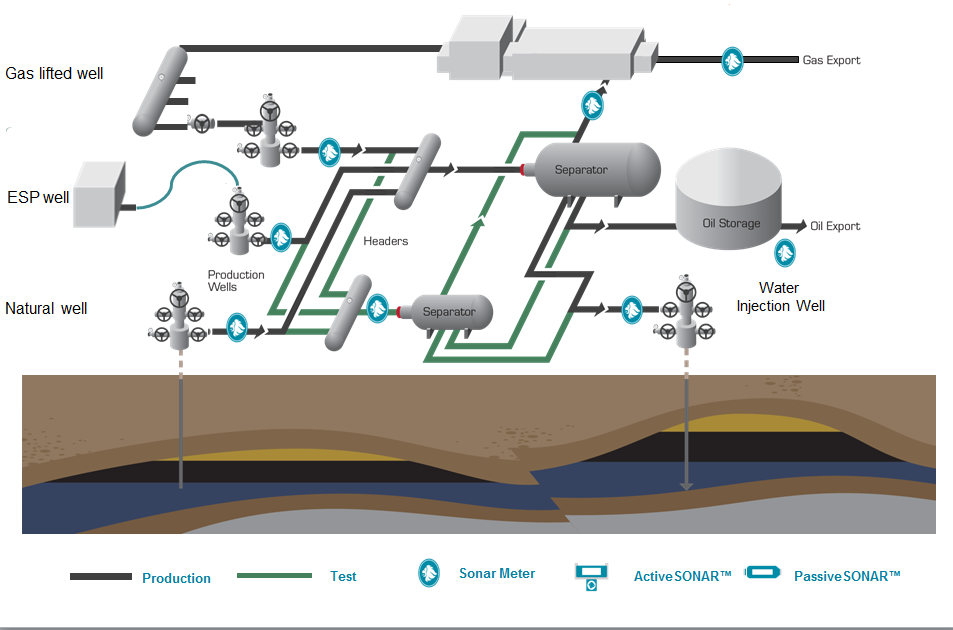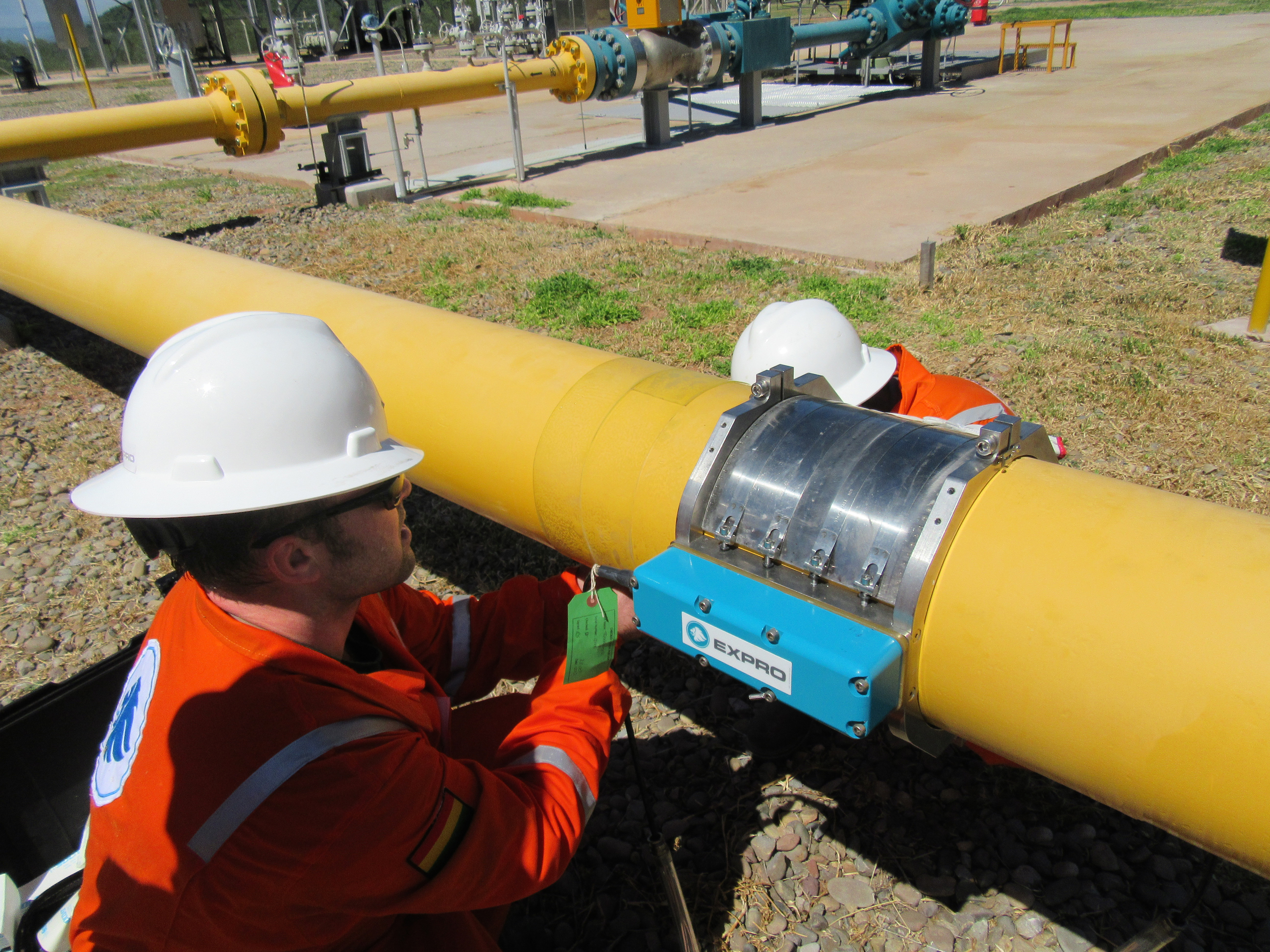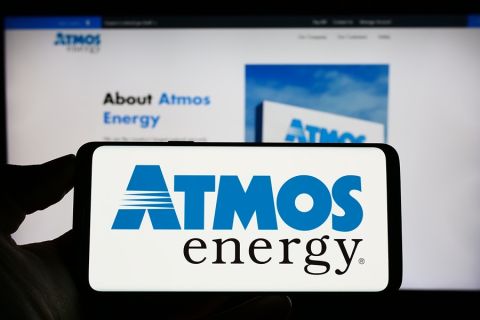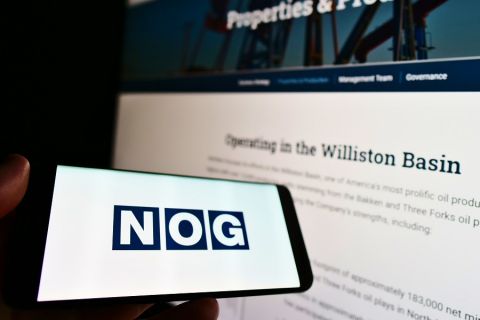Operators are increasingly focused on implementing a proactive flow assurance strategy to minimize any potential interruption to hydrocarbon production. Failure to implement an adequate strategy can lead to unplanned production outages as well as further compounding issues including formation blockages that will require costly intervention and/or remediation activity.
In the production phase of the life cycle, having a stronger understanding of flow behaviors can lead to proactive decision-making, resulting in improved overall flow assurance. This approach includes a range of portable metering technology that can be deployed quickly and cost-effectively to a range of brownfield, mature infrastructure and newbuild facilities.
Delivering improved flow assurance
Monitoring of individual well production and flow performance through the associated piping network provides critical data to validate flow assurance models and implement associated improvements. Where infrastructure is already in place, the use of traditional in-line flow measurement technologies is challenged by a number of factors, including obsolescence, turn down, change in fluid properties and operability. The repair and/or replacement of existing in-line flowmetering can be cost-prohibitive.
In an effort to provide operators and asset managers with a means to manage flow assurance, Expro developed a range of nonintrusive clamp-on flowmeters: ActiveSONAR and PassiveSONAR. The company successfully deploys these meters globally for the surveillance of naturally and artificially lifted production wells, water and gas injection wells, and midstream process applications.
The clamp-on design and measurement principle offers flexibility in meter placement and application suitability since the meters can be installed on existing pipework on a temporary or permanent basis with no process shutdown. The technology’s flexibility means that the flowmeter can be applied in a variety of monitoring applications, including both single and multiphase flows, which allows the
technology to be applied to both upstream and midstream applications—from wellhead to separator.

Providing multiphase measurement
Sonar meters measure the velocity of the mixture flowing through the pipe. Production optimization of the well typically requires the knowledge of individual phase rates—produced gas, oil/condensate and water. Expro has developed the Total Production Surveillance (TPS) system, incorporating PassiveSONAR and/or ActiveSONAR meters, for multiphase reporting of black oil (naturally flowing, electrical submersible pump, gas-lifted) and gas condensate production wells. The TPS system leverages a combination of pressure-volume-temperature models and multiphase flow correlations for production surveillance, where flow assurance is critical.
Individual well production surveillance
Identifying and understanding the performance of each production well and how hydrocarbons flow through the surface piping and process plant is critical in assessing and managing potential flow assurance issues. Production trends and flow-rate management have become a leading focus in the flow assurance cycle, where identification of underperforming wells enables operators to address potential decreases in production early on.
The clamp-on sonar flowmeter was successfully deployed for fieldwide surveillance on Centrica Energy’s North and South Morecambe fields, which are among the largest on the U.K. Continental Shelf (UKCS) in terms of original reserves. The fields consist of a central production facility alongside several normally unmanned installations with no individual well surveillance or export metering. The operator was experiencing measurement issues that were leading to errors in back allocation calculations. Retrofitting ActiveSONAR meters onto the existing pipe network provided a cost-effective solution that facilitated the delivery of real-time flow assurance data at the central production platform and onshore.
The wells were liquid-loaded, compounded by halite buildup across the perforations which, if left untreated, would often kill the well. Remedial action involved calling out a coiled tubing unit and nitrogen lift to unload excessive liquid from the wellbore.
The ability to monitor production rates in real time allowed the operator to proactively manage the well unloading and, where possible, avoid the requirement for costly well intervention activity. The real-time production data also allowed the operator to optimize the duty cycle between flowing and shut in, a technique used to promote liquid unloading from the wells, which resulted in a net gain of doubling peak production from those individual wells.
Fourty-four ActiveSONAR meters have now been installed in Centrica Energy’s platforms in the UKCS to date and have been in operation since 2010.

Optimizing gas lift
Operators must balance the benefits of maximizing liquid production from a gas-lifted field vs. recycling the lift gas and constraining the pipeline network capacity. Expro’s meters were recently used in an onshore brownfield in North Africa where the operator was trying to maximize liquid hydrocarbon recovery from individual wells.
Comprising a large, comprehensive and distributed pipeline network, the field has been in production for more than 30 years, and the wells are now flowing below bubble point. A temporary sonar meter is being used to monitor gas-lift injection rates during production testing operations to establish a set point for gas lift and achieve maximum hydrocarbon liquid production rates.
This gas-lift optimization can in some instances result in a net increase of +/-10% of liquids on a well-by-well basis, which could equal about $500,000 per well per year. A further benefit also includes a reduction in lift gas, which increases capacity within the production piping for additional produced liquids and associated gas. The meters also are being used in this field to optimize gas injection distribution and for water injection for pressure support.
Flexible approach
In a lower-for-longer price environment, nonintrusive metering technology will have a growing and essential role to play in providing flow assurance surveillance solutions that capture critical data and enable companies to make the most informed production optimization decisions.
In brownfield applications, where production rates and fluid properties have changed, it allows operators to collect real-time measurements, update their flow assurance models and validate new strategies.
Sonar meters operate in both single and multiphase flow regimes, offering a single technology platform in which to implement fieldwide surveillance in support of flow assurance. Simultaneous measurements from wellheads, flowlines and process equipment allow a visualization of the interdependency of various “nodes” within the well and production network. Any consequence of change can be observed simultaneously at a system level rather than just a discrete point within the network. A change to a production choke at the wellhead might take hours or days to ripple through the network and validate that change.
The clamp-on nature of the meters offers either a permanent retrofit to an existing or newbuild facility for long-term monitoring of flow assurance strategies or as a temporary portable tool to provide real-time diagnostics where flow assurance issues are suspected.
Offering this flexible approach to metering is increasingly important as operators continue to develop and refine their plans for a cost-effective flow assurance strategy.
References available.
Recommended Reading
Occidental Increases Annual Dividend by 22%
2024-02-11 - Occidental Petroleum Corp.’s newly declared dividend is at an annual rate of $0.88 per share, compared to the previous annual rate of $0.72 per share.
Atmos Energy Announces Quarterly Dividend
2024-02-11 - Atmos’ dividend marks the company’s 161st consecutive quarterly dividend.
From Restructuring to Reinvention, Weatherford Upbeat on Upcycle
2024-02-11 - Weatherford CEO Girish Saligram charts course for growth as the company looks to enter the third year of what appears to be a long upcycle.
Atlas Energy Solutions Declares Dividend
2024-02-09 - Atlas Energy’s dividend represents a 5% increase from the previous quarter’s dividend.
Northern Oil and Gas Ups Dividend 18%, Updates Hedging
2024-02-09 - Northern Oil and Gas, which recently closed acquisitions in the Utica Shale and Delaware Basin, announced a $0.40 per share dividend.





